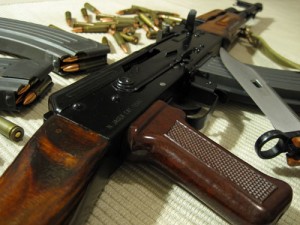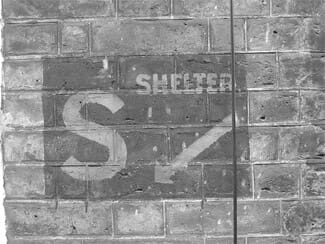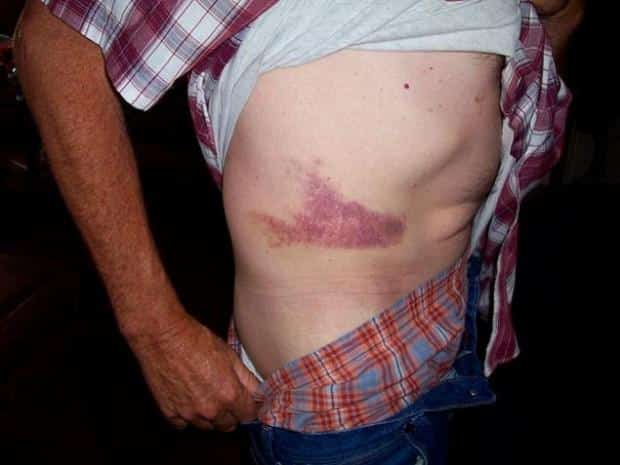 Guys seem to have an instinct for modification. The vehicle looks boring? Customize it. The house doesn’t suit your needs? Knock out a wall and add on. Then knock out another wall if needed.
Guys seem to have an instinct for modification. The vehicle looks boring? Customize it. The house doesn’t suit your needs? Knock out a wall and add on. Then knock out another wall if needed.
That instinct extends to firearms as well. Just look at all the stuff you can buy to go along with your gun: stocks, rails, grips, slings, web gear, and other tools and paraphernalia. Beyond that, you can hire a gunsmith to tune your firearm to peak performance, or take on a do-it-yourself project and save a few bucks. Either way, keep in mind that modification can drop the historical and collector value of some guns, and void the manufacturer’s warranty on your new gun. It’s best to learn how to handle your gun the way it is now, without modifications, before making a change you can’t reverse. Remember, Annie Oakley used a plain old .22 and nailed 4472 out of 5000 targets thrown up in the air. The shooter is more important than the gun!
Of course, two things to reject out of hand are the temptations to modify your firearm to be fully automatic (FA), and putting together a homemade silencer. These actions will buy you free room and board, courtesy of the federal government. Not only will you face jail time, but convictions will bring fines and legal fees, and strip you of the right to own another gun for the rest of your life. If you still feel the need for an FA or silencer, legally apply for a Class III license.
Here are some common modifications for handguns, shotguns, and rifles…
Handguns
First, the grips. Synthetic rubber molded grips, like those available from Hogue or Pachmayr, both improve your grip and absorb some of the recoil. But some will find the pistol grip too wide with this change, or that they get sticky when carried against your body.
Another concern is springs. Some semi-automatics may need their recoil and magazine springs replaced. Hotter loads can be handled better with a stiffer-rated magazine spring, and your rounds will be fed more reliably with a strong magazine spring. You can learn how to replace springs from an online forum or gunsmith. Field strip and soak your gun overnight in a good solvent like PB Blaster or brake cleaner. An important note: If you’re an amateur, field stripping is easy enough, but don’t attempt a complete disassembly. This can lead to a trip to a gunsmith with a box full of loose parts you can’t reassemble.
If your gun lacks dots on the front or rear sights, start with a white base color, then carefully add the color dot on top of it. Afterwards, add an acrylic protective finish. An expensive alternative is to add Tritium sights, which glow in the dark; they’re great, but often unjustified in terms of expense.
The most important thing to have is a gun that fires every time. The most practical modifications you can make have to do with reliable feeding of ammunition and improving the trigger pull. To insure reliable feeding, polish the chamber throat. As for trigger pull, find instructions online to improve the trigger action of your revolver using simple tools and a polishing stone. Do this only if you’re ready to do your homework, and can use the tools.
Remember, easy does it with grinding and polishing – just a light stroke or two before reassembly and testing.
One more thing: Get some extra magazines for your semi-auto pistol. Get a good half dozen to reduce the risk of your semi-auto becoming a single shot. Factory brand magazines are your best bet. Test for reliability by using each magazine in a practice shoot. Someday your life may depend on it.
Shotguns
Nothing beats a shotgun for home defense. A legal 18.5″ barrel length is best for navigating around the corners of your house in the dark. A longer barrel can be chopped off or replaced. Even better, buy a home defense shotgun at the start with an 18.5″ barrel. For all the money you may spend in modification, you might as well buy one the right size to begin with.
A pad for the butt stock can be added to reduce the force of recoil. A proven design for reducing shoulder slam is the Limbsaver™ brand butt pad. Other modifications can cost more than they’re worth, mods like synthetic pistol buttstock combos, tactical rails, extended shell tubes, flashlights, pump slides with hand straps, barrel shrouds, and slings with shell holder loops. They also add weight, and even awkwardness; you can snag your shotgun on something in the dark if you’re using a sling. Stick to a basic pump shotgun with an 18.5 inch barrel for home defense.
Rifles
 Your handgun is portable and your shotgun has stopping power, but your rifle makes the argument final. However, don’t get into trouble making modifications to your SKS, AK, Saiga, and other imports. With minor exceptions, you change the legal status of these weapons by modifying them. Afterward, they must be made 922r compliant, with certain parts made in the U.S., to keep the feds happy.
Your handgun is portable and your shotgun has stopping power, but your rifle makes the argument final. However, don’t get into trouble making modifications to your SKS, AK, Saiga, and other imports. With minor exceptions, you change the legal status of these weapons by modifying them. Afterward, they must be made 922r compliant, with certain parts made in the U.S., to keep the feds happy.
A trigger job can be done without worrying about 922r compliance. Installing a TAPCO trigger in an AK can help address that wicked trigger slap, which can result in flinching and discomfort for the shooter.
You may also want to consider a synthetic stock for your rifle. They’re lighter, moisture proof, and dent resistant. On the negative side, they can be expensive, like the $139.00 MG42 replica stock for the Ruger 10/22. Synthetic stocks often require trimming and cutting to make them fit the gun. On a side note, keep your wood stocks. It can increase the resale value if you decide to sell the gun.
Do some research before adding a scope, which can be an expensive prospect. Look for one with glass that won’t fog, that won’t lose zero easily, and has proper eye relief. An added expense, most of the time, is the cost of installing a mount for the scope you choose, which can mean a gunsmith drilling and tapping holes in your rifle.
Balance your gun purchases and modification with the other aspects of emergency preparedness – ammo, food, and other gear. Study up before any major (or expensive) step. Your resources include online forums, friends and family, and others you may meet at the range. Ask what works for them. Get the most bang for your buck, and spend an equal amount of time building the skills of the one holding the gun. Parts are available for a price; skill only comes through practice!











